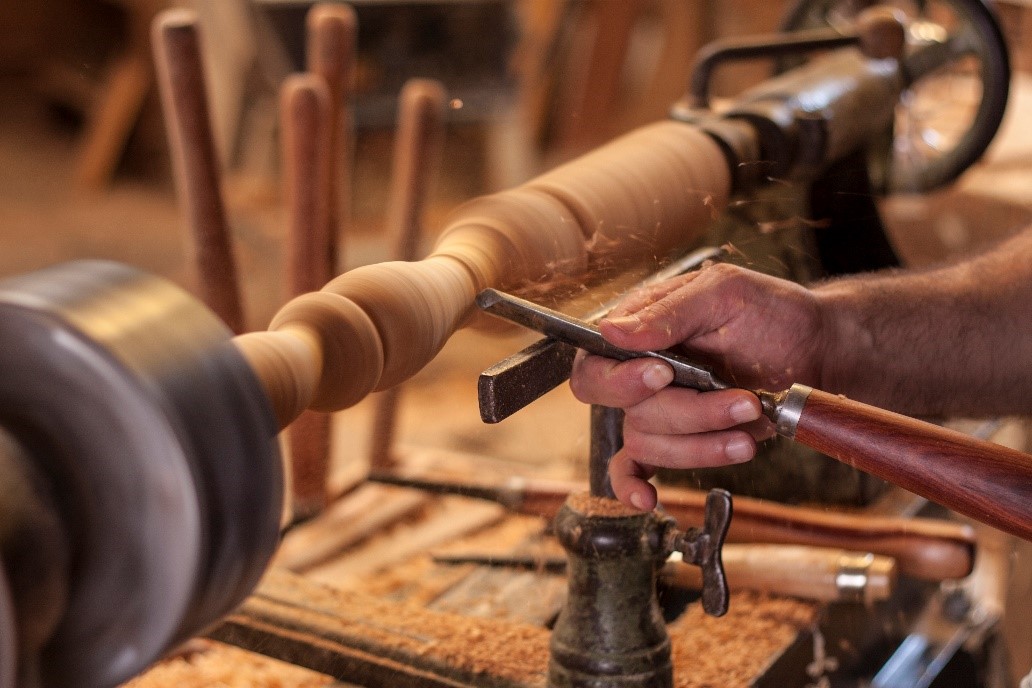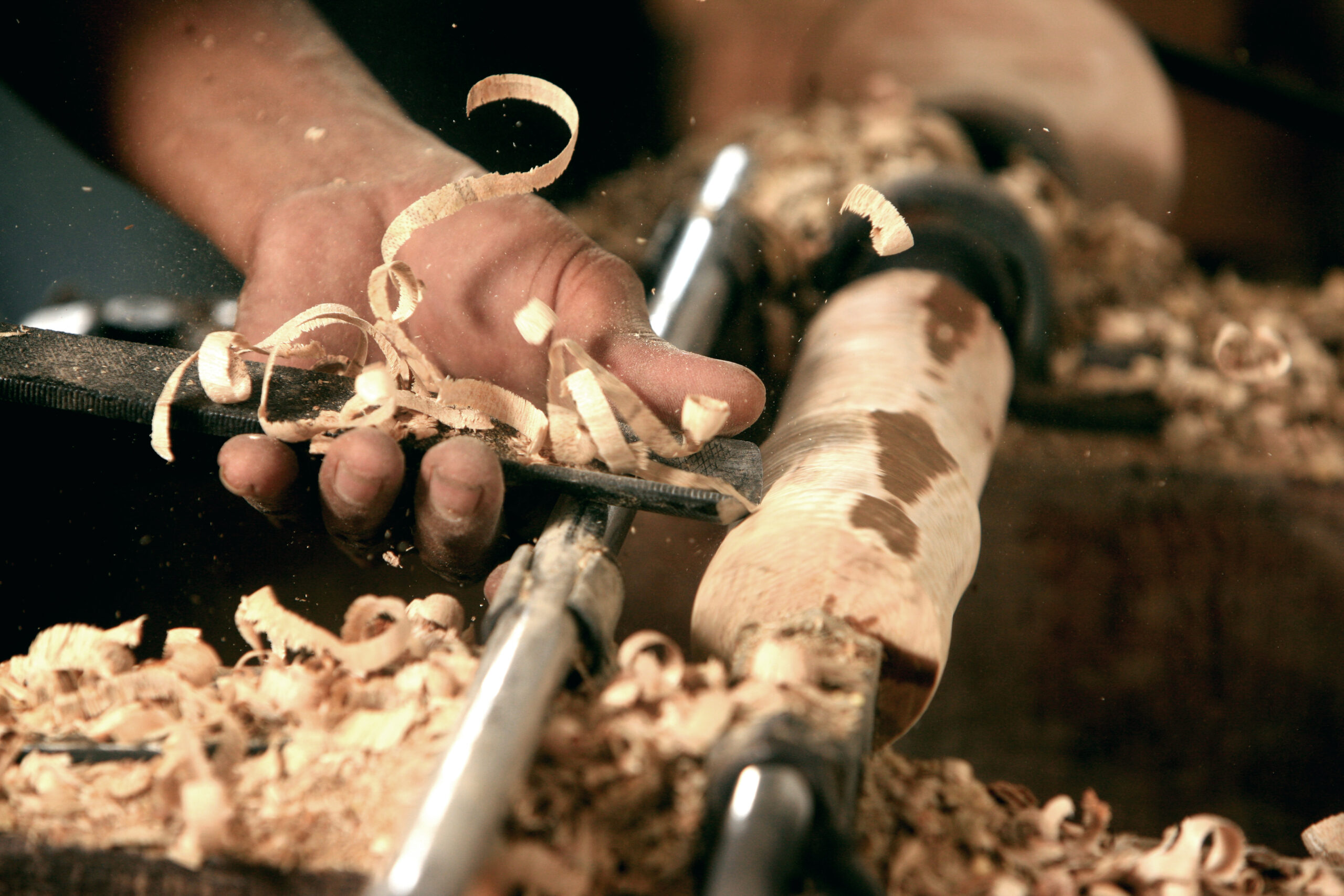Are you curious about woodturning wood? Well, let’s dive in and discover what it’s all about. Woodturning wood is a fascinating craft that involves shaping wood into beautiful and functional objects. Imagine transforming a rough piece of timber into a stunning bowl or a delicate vase. With woodturning, the possibilities are endless!
So, what exactly is woodturning wood? It refers to the type of wood that is most commonly used for woodturning projects. This wood has specific characteristics that make it ideal for turning on a lathe, which is the main tool used in woodturning. From hardwoods like maple and oak to softwoods like pine and cedar, there is a wide range of wood species that can be used for woodturning.
Whether you’re a beginner or an experienced woodturner, understanding the different types of wood for woodturning is essential. Each type of wood has its own unique properties, such as grain patterns, hardness, and color, which can greatly affect the outcome of your project. So, get ready to dive into the world of woodturning wood and unleash your creativity!

What is Woodturning Wood?
Woodturning wood is a type of wood that is specifically used for woodturning, which is the art of shaping wood using a lathe and various cutting tools. This type of wood is chosen for its unique properties that make it suitable for turning on a lathe and creating intricate designs and shapes. Woodturning wood is typically selected based on its grain patterns, density, and stability, as well as its ability to hold fine detail and withstand the turning process.
1) Types of Woodturning Wood
Woodturning wood comes in a variety of types, each with its own characteristics and qualities. Some popular types of woodturning wood include:
1.1) Maple: Maple wood is a popular choice for woodturning due to its tight grain and smooth texture. It is known for its pale color and subtle grain patterns, which make it ideal for creating clean and elegant designs.
1.2) Walnut: Walnut wood is prized for its deep, rich color and beautiful grain patterns. It is a dense wood that turns easily and holds fine detail, making it a favorite among woodturners.
1.3) Ash: Ash wood is known for its light color and straight grain. It is a strong and durable wood that is relatively easy to turn. Ash is often used for larger projects like bowls and vases.
2) Properties of Woodturning Wood
Woodturning wood possesses certain properties that make it ideal for the turning process. These properties include:
2.1) Grain Orientation: Woodturning wood typically has a straight or slightly curved grain, which makes it easier to work with on a lathe. This allows for smooth and consistent cutting, resulting in cleaner and more precise shapes.
2.2) Density: Woodturning wood is often dense and hard, which enables it to withstand the forces applied during the turning process. It also allows for fine detail and intricate designs to be created without the wood splitting or breaking.
2.3) Stability: Woodturning wood is chosen for its stability, as it needs to hold its shape and dimensions after being turned. Stability is important to prevent warping, cracking, or any other deformities that may occur over time.
3) Benefits of Using Woodturning Wood
Using woodturning wood in your projects offers several benefits that contribute to the overall quality and aesthetics of your finished pieces. Some of these benefits include:
3.1) Beauty: Woodturning wood often features beautiful grain patterns, colors, and textures, which enhance the visual appeal of the finished piece. The natural beauty of the wood adds character and uniqueness to each creation.
3.2) Versatility: Woodturning wood can be used to create a wide range of items, from bowls and vases to pens and ornaments. Its versatility allows woodturners to explore their creativity and experiment with different shapes and designs.
3.3) Durability: Woodturning wood is typically selected for its durability, ensuring that the finished pieces will stand the test of time. With proper care and maintenance, woodturning creations can be enjoyed for generations.
In conclusion, woodturning wood is a specialized type of wood that is chosen for its unique properties and suitability for the woodturning process. It offers a wide range of options in terms of types, properties, and benefits, allowing woodturners to bring their artistic visions to life on the lathe. Whether you’re a beginner or an experienced woodturner, choosing the right wood is essential for creating stunning and enduring works of art.
Key Takeaways: What is Woodturning Wood?
- Woodturning wood refers to the type of wood used in the art of woodturning.
- It is specifically chosen for its grain patterns, color variations, and workability.
- Common woodturning woods include maple, oak, walnut, and cherry.
- These woods are often dried and stabilized to prevent warping or cracking.
- Different woods offer unique characteristics that can enhance the final turned piece.
Frequently Asked Questions
Here are some common questions about woodturning wood and their answers.
What types of wood are commonly used in woodturning?
There are several types of wood that are commonly used in woodturning projects. Some popular choices include maple, oak, walnut, cherry, and birch. These woods are often selected for their durability, stability, and aesthetic qualities. Each type of wood has its own unique characteristics, such as grain patterns and color variations, which can greatly influence the final appearance of the turned piece.
It’s important to choose a wood that is appropriate for the intended project and consider factors such as hardness, workability, and the desired finish. Some woods may be more suitable for decorative items, while others may be better suited for functional pieces, like bowls or tool handles.
How is woodturning wood different from regular wood?
Woodturning wood is specifically chosen and prepared for the art of woodturning, which involves creating objects on a lathe. Unlike regular wood, woodturning wood is often kiln-dried to remove excess moisture, making it more stable and less likely to crack or warp during the turning process. It is also typically cut into sizes that are suitable for use on a lathe.
Woodturning wood may also be selected for its aesthetic qualities, such as the grain patterns and color variations mentioned earlier. These factors can greatly enhance the beauty of the finished piece. Additionally, woodturning wood is often classified by its hardness, as this can determine the difficulty of turning and the level of detail that can be achieved.
Where can I find wood for woodturning?
There are several places where you can find wood for woodturning. Local lumberyards, woodworking supply stores, and specialty wood suppliers often carry a variety of wood species that are suitable for woodturning. These places may offer a selection of pre-cut pieces or large blocks of wood that you can then cut and shape to fit your project.
You can also consider online sources, such as woodworking websites, marketplaces, or forums. Many woodturners sell their excess wood or share tips on where to find quality wood for turning. Another option is to reach out to local tree service companies or woodworking clubs, as they may have access to wood that would otherwise go to waste.
Do I need special tools to work with woodturning wood?
Yes, woodturning typically requires a specific set of tools designed for working on a lathe. These tools include gouges, chisels, parting tools, and scrapers, among others. Each tool has its own purpose and is used to shape, cut, and remove material from the spinning wood. It’s important to use sharp tools and properly maintain them for safe and effective woodturning.
In addition to the cutting tools, woodturners also use other accessories like a lathe chuck, faceplate, drive centers, and live centers to hold and support the wood during the turning process. Safety gear, such as goggles and a face shield, is also recommended to protect against flying wood chips or other debris.
What are some beginner-friendly woodturning projects?
There are several beginner-friendly woodturning projects that allow newcomers to learn and practice basic woodturning techniques. Some examples include turning small bowls, making pens or bottle stoppers, creating wooden handles for kitchen utensils, or turning simple decorative items like candle holders or ornaments.
These projects often require few tools and can be completed with a small amount of wood. They allow beginners to gain experience in basic spindle turning or faceplate turning, while also producing functional or decorative items they can be proud of. As skills progress, woodturners can move on to more complex projects that require advanced techniques and larger pieces of wood.

The Wood Turning Lathe A to Z for Beginners, a Roger Webb easy learning tutorial
Summary
So, woodturning is a cool way to shape wood using a lathe. It’s like making beautiful sculptures out of blocks of wood by spinning them really fast and using sharp tools. It’s a mix of art and woodworking that can create all kinds of amazing things, from bowls and vases to pens and furniture legs.
But before you start, it’s important to pick the right kind of wood – something sturdy and easy to work with. And don’t forget to wear safety gear like goggles and gloves to protect yourself. With some practice and patience, you can become a woodturning wizard and make your own awesome wooden creations!
